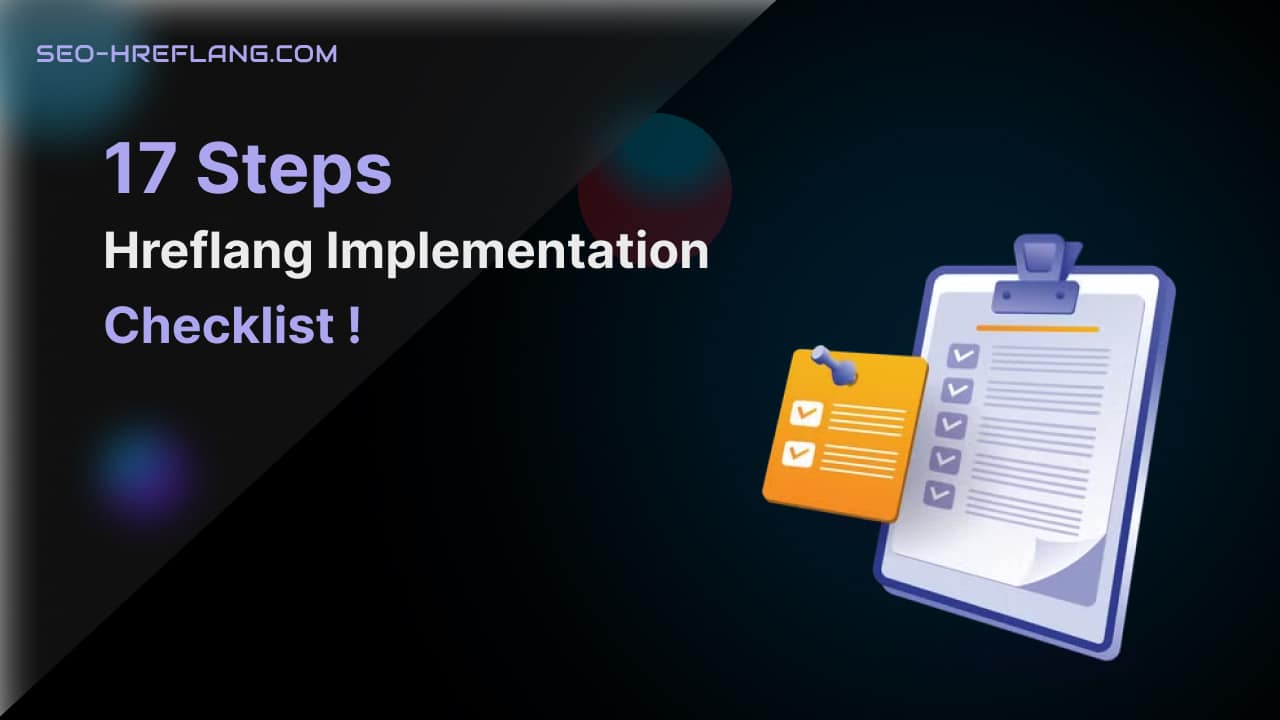Hreflang tags are a crucial aspect of international SEO(Hreflang Implementation Checklist). They help search engines understand the relationship between pages in different languages and regions, which can improve your website’s visibility and search rankings.
However, Hreflang Implementation tags can be a challenging task, especially for those who are new to SEO. In this post, we’ll provide you with a step-by-step guide on how to implement hreflang tags effectively with an hreflang implementation checklist.
- Briefly introduce the importance of hreflang tags for international SEO
- Explain why a step-by-step checklist is necessary for implementing hreflang tags effectively
▪️ Understand Your Target Audience:
Begin by identifying the specific regions and languages you want to target. Conduct thorough research to determine the primary languages spoken and countries you aim to reach.
▪️ Conduct Keyword Research:
Perform keyword research for each target region and language to understand the search intent and popular search terms used by your target audience.
▪️ Map Language Versions to URLs:
Create a clear mapping of language versions to their respective URLs. Determine the URL structure for each language version, ensuring consistency and clarity.
▪️ Choose Hreflang Implementation Method:
Decide on the appropriate hreflang implementation method for your website. The two commonly used methods are HTML link elements and HTTP headers. Choose the method that aligns with your technical capabilities and requirements.
▪️ Add Hreflang Annotations:
Implement hreflang tags on every relevant page of your website. Place the hreflang annotations in the head section of your HTML code or configure them in the HTTP headers. Ensure that each page contains the correct hreflang tags corresponding to its language and region.
▪️ Use Language and Country Codes:
Utilize appropriate language and country codes in your hreflang tags. Language codes follow the ISO 639-1 standard, while country codes adhere to the ISO 3166-1 Alpha-2 standard.
▪️ Cross-Verify Hreflang Tags:
Double-check the accuracy of your hreflang tags to eliminate any errors or inconsistencies. Confirm that each hreflang tag is correctly implemented, matches the target language and country, and points to the appropriate URLs.
▪️ Verify Self-Referencing Hreflang Tags:
Ensure that each language version of a page includes a self-referencing hreflang tag. This confirms that the page is intended for the specified language and region.
▪️ Implement Canonical Tags:
Accompany your hreflang tags with canonical tags to further indicate the preferred version of each page. Canonical tags help search engines understand which page should be considered the primary version when multiple language versions exist.
▪️ Test Hreflang Tags:
Conduct thorough testing of your hreflang implementation. Utilize tools like the hreflang testing tool in Google Search Console to validate the correctness of your hreflang annotations and identify any potential issues or errors.
▪️ Monitor Search Console Reports:
Regularly monitor the International Targeting report in Google Search Console to identify any hreflang-related issues or errors. This report provides insights into how Google understands and indexes your international pages.
▪️ Analyze Crawl Errors:
Keep an eye on crawl errors reported in Google Search Console. Address any crawl errors related to hreflang tags promptly to ensure proper indexing of your pages.
▪️ Monitor Organic Traffic and Rankings:
Continuously monitor organic traffic and search rankings for each target language and region. Analyze any fluctuations or discrepancies and investigate potential hreflang-related issues that may be impacting your SEO performance.
▪️ Localize Metadata and Content:
Optimize your metadata, including title tags and meta descriptions, for each language version. Localize your content to cater to the linguistic and cultural preferences of your target audience.
▪️ Provide Language Switcher:
Implement a user-friendly language switcher on your website. This allows users to easily navigate between different language versions, enhancing their browsing experience and improving engagement.
▪️ Update XML Sitemaps:
Update your XML sitemaps to include all language versions of your pages. Submit the sitemaps to search engines to ensure proper crawling and indexing of your international content.
▪️ Regularly Audit and Maintain:
Conduct regular audits of your hreflang implementation to address any changes or updates required. Stay up to date with industry best practices and search engine guidelines to ensure ongoing accuracy and effectiveness of your hreflang tags.
By following this 17-step hreflang implementation checklist, you can ensure accurate targeting, improved user experience, and enhanced SEO performance across multiple languages and regions. Regular monitoring and maintenance will help you identify and resolve any issues promptly, optimizing your international SEO strategy.





